SHARDLOW WALK

THE WALK
Shardlow Walk is one not to be missed in dry weather; the section by the river often becomes waterlogged when the weather is wet. In summer and at the weekends, the canal is a picture with brightly painted longboats, moored beside the towpath or moving slowly along the canal. Walkers find it fascinating to stop and watch the boats navigate the two locks encountered on the walk. Exploring Shardlow and enjoying refreshments at one of several pubs and restaurants.
LOOK OUT FOR
Route Point 1 – In its heyday from the 1770s to the 1840s, Shardlow was an important inland port for transporting goods from the River Trent to the Trent and Mersey Canal. It was sometimes referred to as ‘Little Liverpool’ and ‘Rural Rotterdam.’ Today, it is considered Britain’s most complete example of a canal village that still survives with over 50 listed buildings. A walk along the canal towpath brings you into contact with many of the old buildings of the Canal Age. Mainly now used for different purposes, but still largely intact.
Point 2 – Derwent Mouth Lock is the first lock encountered on the Trent and Mersey Canal. A special milepost commemorates the canal. The lock gets its name from where the canal meets the River Derwent and the River Trent, which form the border between Derbyshire and Leicestershire. The Derwent rises between Bleaklow and Howden Moors and flows south through Derbyshire for its entire length.
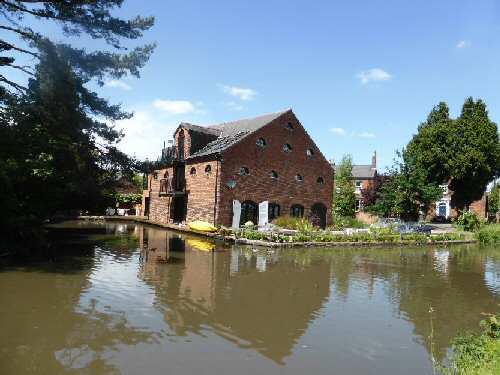
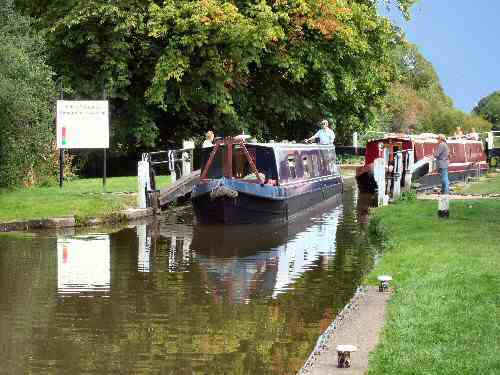
Point 3 – Derwent Valley Heritage Way is a 55-mile footpath. It starts from Ladybower Reservoir in the Peak District National Park and passes through attractive countryside, picturesque villages, and Chatsworth Park. Derwent Valley Mills World Heritage Site takes up much of the southern section of the walk. From there, it follows the Riverside Path from the Silk Mill through Derby and continues to the historic inland port of Shardlow, where the journey ends at Derwent Mouth, where the River Derwent flows into the River Trent.
Point 4 – Long Horse Bridge was originally a wooden bridge that crossed the Trent at Derwent Mouth. It enabled horses hauling barges to take the towpath across the river down the Trent and Mersey, or in the other direction along the southern bank of the River Trent. The bridge was replaced in 1893 and again in 1932 before it closed in 2002 for safety reasons. After a considerable delay, a new bridge was built about 160 yards upstream and opened in November 2011.
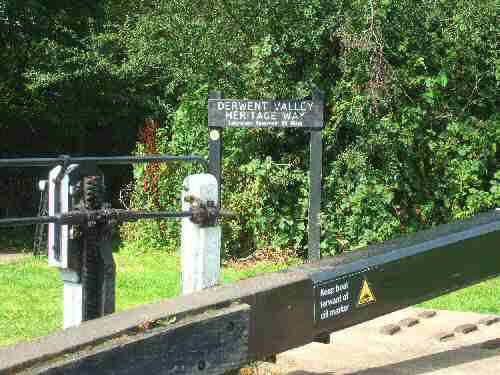
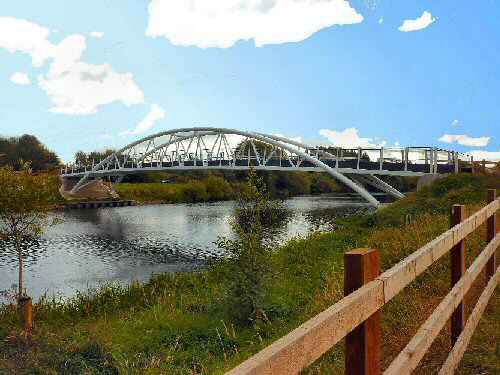
Point 6 – Cavendish Bridge is a hamlet on the Leicestershire side of the River Trent, which owes its existence to its location as a crossing point. Before the bridge was built, it was called Wilden Ferry. In the second half of the 17th century, Wilden Ferry became the head of the Trent navigation until the ferry was replaced by a bridge named after the hamlet. The bridge divides Derbyshire and Leicestershire and was built in 1960 to replace a much older one, which once carried the main London to Manchester turnpike.
Point 7 – Shardlow Heritage Centre is housed in one of the earliest canal warehouses and contains a wide range of displays relating to the colourful history of the village. Here you will see a small remnant of a twelve-foot-long oak boat exposed by spring floods at Shardlow quarry, in the bed of a former side channel of the River Trent. The boat, probably dating from the middle Bronze Age, about 1300 BC, still carried some of its quarried stone cargo. Archaeologists examining the find described its discovery as ‘spectacular’. Ran by volunteers, the heritage centre is highly regarded.
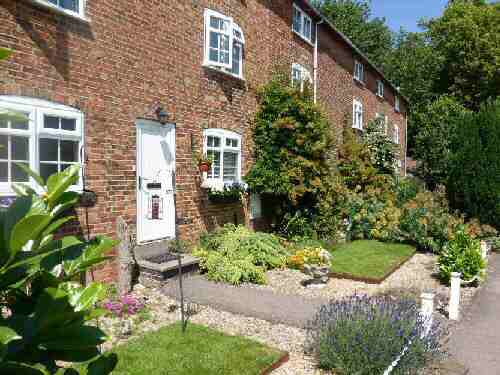
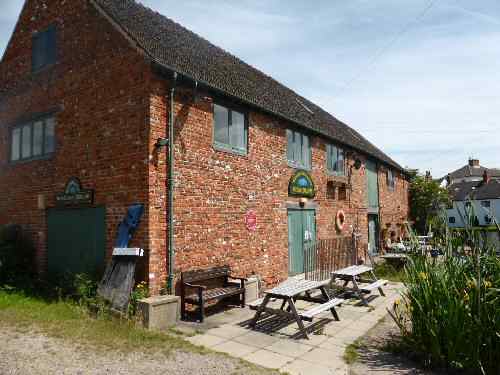
WALK DETAILS
Length: 3 miles.
Start: Shardlow is on the old A6 (now B5010) Derby to Loughborough Road (SK445303).
Terrain: This is an easy flat walk, but the section by the River Trent may be flooded after very heavy rainfall and should not be attempted in such conditions.
Refreshments: The village has several pubs, restaurants, and a café to suit all tastes.
THE ROUTE
1. If you travel from Derby and use your transport, turn left by the Navigation Inn down Wilne Lane. The car park is on the right near the canal bridge. From the car park, turn right onto Wilne Lane. Descend the steps on the left to the canal towpath, where you get a good view of Shardlow’s busy canal village. Once you are on the towpath, go to the right under Wilne Road Bridge and continue by the side of the Trent and Mersey Canal.
2. After about one mile, you arrive at Derwent Mouth Lock, the first lock encountered on the Trent and Mersey Canal. There is a special milepost sited alongside the lock that commemorates the canal. Here you can stop and, if you are lucky, enjoy watching canal boats navigating the lock.
3. The Derwent Valley Heritage Way starts at the mouth of the River Derwent. A sign on the other side of the canal by the lock indicates the walk is 55 miles long. A short distance after passing the lock, you get a clear view of where the River Derwent meets the River Trent and ends its journey through Derbyshire. Follow the path around as it curves to the right.
4. Cross the new bridge that replaced the previous Long Horse Bridge, which had become unsafe to cross and was removed. After going over the new bridge, turn right and walk along the gravel track by the river.
5. Continue along the track, which stays close to the riverbank. At a path indicator, keep close to the river. Remain by the riverbank to reach an open field, passing to the right of a small woodland area and continue forward. Where the riverbank swings to the right, keep straight on towards some buildings you can see in the distance.
6. Where a long building blocks the path, turn left and right to walk around it. Cross a stile by a metal gate, turn left, walk along an access road to the B5010 road and go right. The small hamlet of Cavendish Bridge is on the left if you wish to visit. After completing your visit, return to the B5010 and turn left.
7. Cross the Cavendish Bridge. Just over the bridge on the left is a plaque with a scale of charges once used to cross the bridge. Continue along the road, passing the main entrance to Shardlow Marina just before you reach the Navigation Inn. A few yards further, turn left down Canal Bank Road, past the Old Salt Warehouse. Walk down the access road, with Shardlow Heritage Centre on the opposite side of the canal, to reach Lock Cottage and the lock.
8. Turn right to walk back along the canal towpath, continuing under Idle Bridge and past the main mooring area for canal boats. Return to Wilne Lane by ascending the steps at the side of the bridge over the canal carrying the lane, then turn right back to the walk’s starting point.
SHARDLOW
